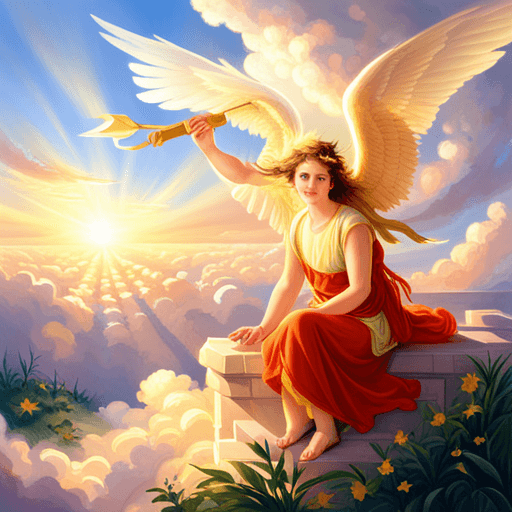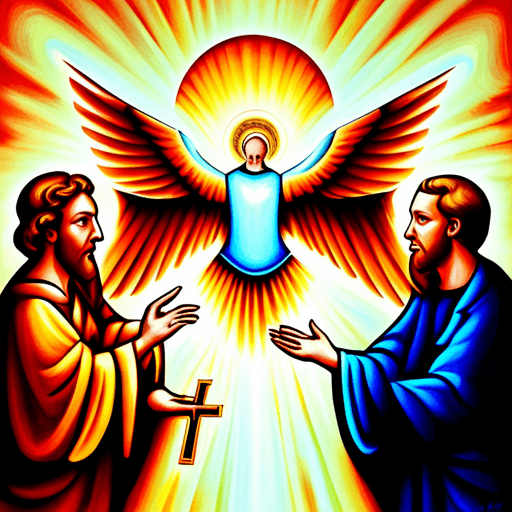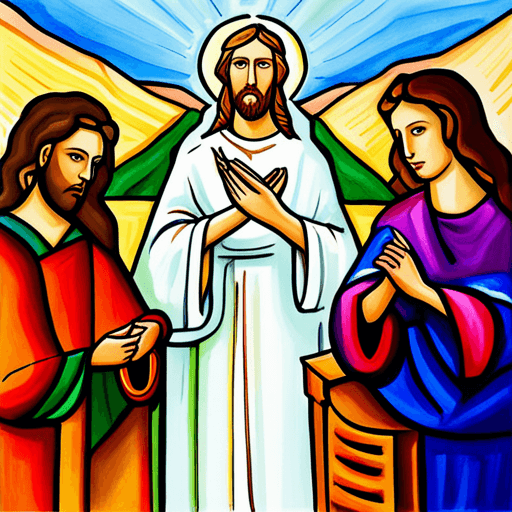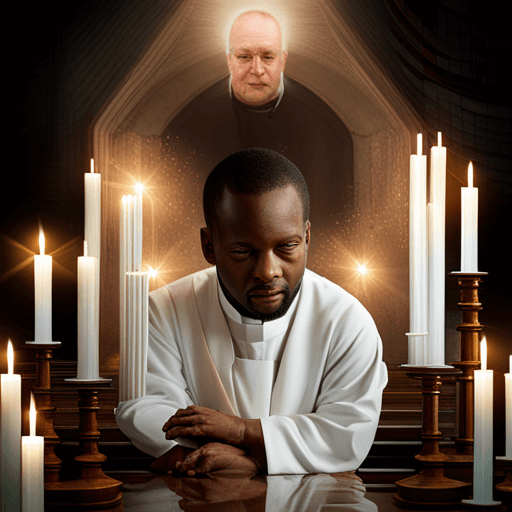You may have heard of the cherubim, those mystical beings with wings and multiple faces that are often depicted in religious art. But do you know their true significance?
The cherubim have been a part of human culture for centuries, revered as guardians of God’s glory and protectors of divine secrets. In this article, we will explore the history and role of the cherubim across different cultures and religions.
As you delve into the world of the cherubim, you will discover their mysterious origins and their various depictions in art and literature. You will learn about their role as protectors of God’s glory, guarding holy spaces from those who would defile them.
And as you uncover different interpretations of the cherubim across cultures, from ancient Babylon to modern-day Christianity, you will see how these angelic beings continue to hold a special place in our collective consciousness.
Join us on this journey to explore one of humanity’s most fascinating spiritual symbols – the cherubim: guardians of God’s glory.
The Origins and History of the Cherubim
As we delve into the origins and history of these heavenly beings, we can picture them soaring through the skies with their majestic wings, watching over the sacred realm. Cherubim have been a part of ancient religious practices and beliefs for centuries.
In fact, they’re mentioned in the Bible as angelic creatures that guard God’s glory. The symbolism of cherubim has also found its way into contemporary culture. You may have seen cherubim depicted in artwork or even as decorative pieces in homes.
They’re often portrayed as cute and chubby little angels, but their true nature is much more complex than that. As guardians of God’s glory, they represent divine power and protection. Their presence serves as a reminder to us all that there’s something greater than ourselves at work in the universe.
Depictions of the Cherubim in Art and Literature
Artists and writers throughout history have been captivated by the mysterious and awe-inspiring figures believed to sit at the throne of God. The cherubim, with their multiple wings and unique appearance, have been depicted in countless artworks and literature as guardians of God’s glory. These figures have become symbols of power, strength, and divinity.
In artistic representations, cherubim are often depicted as having a human-like body with wings on their back and multiple faces. These faces can represent different aspects of God or serve as a symbol for the many ways in which he’s present in our lives. Additionally, cherubim are sometimes portrayed carrying objects such as swords or flaming torches that further emphasize their role as protectors of divine power.
As such, these symbolic meanings have helped to inspire artists and writers alike to create works that pay homage to this incredible creature.
The Role of the Cherubim as Guardians of God’s Glory
You can’t help but feel overwhelmed by the responsibility given to these heavenly beings, tasked with protecting the very essence of divinity itself.
The cherubim’s symbolism is not just confined to art and literature, but also found in biblical texts that describe their role as guardians of God’s glory.
They are depicted as having wings and multiple faces, representing their ability to see and know all things.
The cherubim serve as a reminder that there are forces at work beyond our comprehension.
Their presence signifies the majesty and power of God, while also emphasizing the importance of reverence and respect towards Him.
As guardians of His glory, they stand watchful over all creation, ensuring that nothing tarnishes or diminishes it.
You too can take inspiration from their unwavering devotion and commitment to duty, striving to protect what is sacred in your own life.
Different Interpretations of the Cherubim Across Cultures
Explore the varying perspectives on these celestial beings found in different cultures around the world. The cherubim have been depicted and interpreted differently across various cultures, but one thing remains consistent – they are seen as symbolic representations of divine power and guardianship.
In Judaism, Christianity, and Islam, the cherubim are described as winged creatures with multiple faces or eyes that guard the entrance to God’s throne room. They are believed to be powerful spiritual beings who protect God’s glory from any impurities.
However, outside of Abrahamic religions, interpretations of the cherubim take on a different form. In ancient Mesopotamia and Egypt, they were often depicted as hybrid creatures with human and animal features, such as bull or lion heads. These cultures viewed the cherubim as protective deities that safeguarded sacred spaces like temples and tombs.
Cross-cultural comparisons show that while there may be differences in how these celestial beings appear in different traditions, their underlying purpose remains constant: to act as guardians of divinity.
The Continuing Significance of the Cherubim in Religious and Cultural Traditions
As you delve into the continuing significance of these celestial beings in religious and cultural traditions, you’ll discover their enduring importance as symbols of protection and spiritual guidance.
Interpreting symbolism is an essential part of any religious or cultural practice, and cherubim have been a significant symbol for centuries. They are often depicted as powerful guardians, watching over holy places and providing a sense of security to those who seek refuge.
In modern times, the cherubim continue to hold great significance in various cultures around the world. Their image can be found in art, literature, and even popular entertainment.
Many people still look to them as symbols of divine protection and guidance during uncertain times. Whether you view them as literal beings or simply symbolic representations of spiritual power, there’s no denying that cherubim remain an important aspect of human spirituality today.
Frequently Asked Questions
What is the physical appearance of a cherubim?
When you think of the cherubim, you probably picture a winged baby angel, but their symbolism goes beyond this popular image.
Cherubim have been depicted in art throughout history as powerful and majestic creatures with multiple wings and faces, often serving as guardians or protectors.
Their physical appearance varies depending on the artist’s interpretation, but they are always portrayed as otherworldly beings with a strong presence.
Whether seen in religious iconography or contemporary art, cherubim continue to captivate our imagination and inspire us with their divine beauty.
How do cherubim communicate with humans?
Imagine you’re walking through a forest, feeling the breeze on your skin and the crunch of leaves beneath your feet. Suddenly, you see a cherubim standing before you.
It’s not using sign language or speaking to you in a dream; instead, it communicates with its eyes. You feel a sense of belonging and comfort as the cherubim looks into your soul and understands everything about you.
This is how cherubim communicate with humans – not through physical gestures or words, but through an intuitive understanding that transcends any language barrier. They know us better than we know ourselves, and they offer us guidance and protection even when we don’t realize it.
Cherubim are truly guardians of God’s glory, watching over us always with their gentle yet powerful presence.
Are cherubim mentioned in any other religious texts besides the Bible?
Did you know that cherubim aren’t only mentioned in the Bible, but also in other religious texts and depicted in ancient art?
In Hinduism, they’re known as Gandharvas and are believed to be celestial musicians.
In ancient Assyrian art, winged creatures with human faces resembling cherubim were depicted as guardians of sacred spaces.
Even the ancient Egyptians had a similar concept with their sphinxes, which were often portrayed with wings and a human face.
These depictions show that the concept of divine beings guarding sacred spaces isn’t unique to Christianity or Judaism.
Cherubim continue to inspire our imagination and sense of wonder across cultures and time periods.
What is the significance of the number of wings that cherubim are often depicted with?
Have you ever wondered why cherubim are often depicted with a specific number of wings? The symbolic representation of the number of wings on a cherub is significant in biblical interpretation.
In some depictions, they have two wings, while in others, they have four or even six. Each set of wings represents different aspects of their divine nature and purpose.
Two wings symbolize their ability to fly and move quickly, while four represent their strength and stability. Six wings signify their holiness and purity before God.
Understanding the significance behind the number of wings on a cherub can deepen your appreciation for these heavenly beings and their role in protecting God’s glory.
Are there any rituals or practices associated with cherubim worship in modern times?
Are you curious about the modern practices and traditions associated with cherubim worship?
Although there’s no specific religion centered around cherubim, some individuals believe in their influence on contemporary spirituality. There are those who incorporate images or statues of cherubim into their personal altars or meditation spaces.
However, like any religious practice, there are controversies surrounding the worship of these heavenly beings. Some argue that it strays too far from traditional monotheistic beliefs, while others see it as a harmless form of spiritual expression.
Regardless of your personal beliefs, exploring different forms of spirituality can be a fulfilling journey towards self-discovery and belonging.
Conclusion
Congratulations! You’ve gained a deeper understanding of the Cherubim, the heavenly creatures that guard God’s glory. Through exploring their origins and history, as well as their depictions in art and literature, you’ve come to appreciate their significance across cultures.
The role of the Cherubim as guardians is an important one that transcends religious boundaries. Whether they’re viewed as protectors or messengers, their presence reminds us of the sacredness of all things and our responsibility to care for them.
May this newfound knowledge inspire you to seek out further wisdom and appreciation for the mysteries of faith and spirituality.




